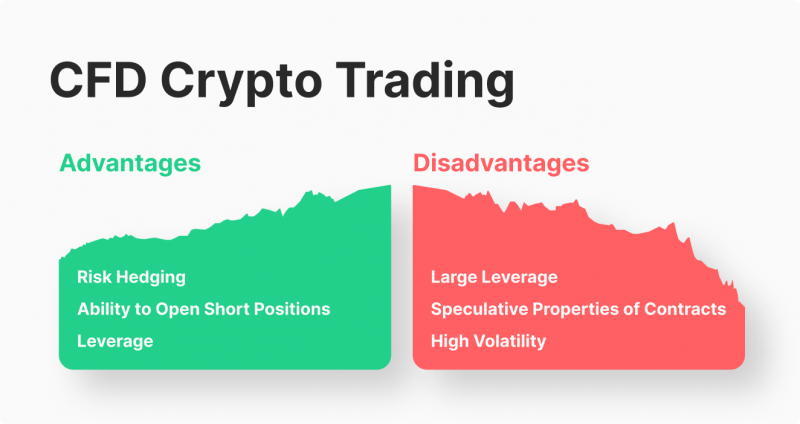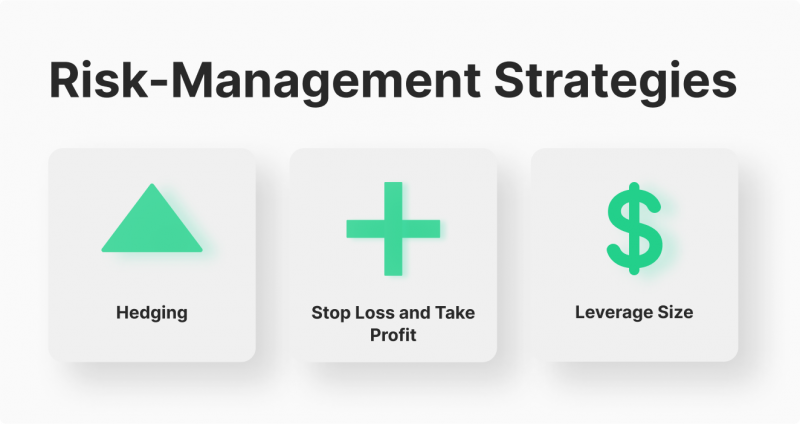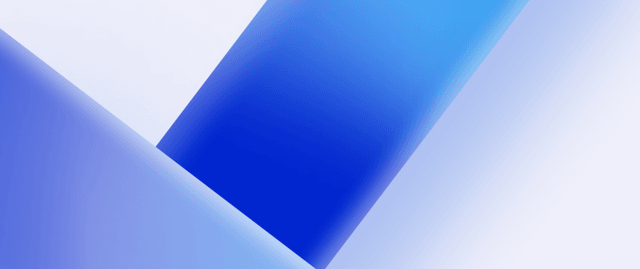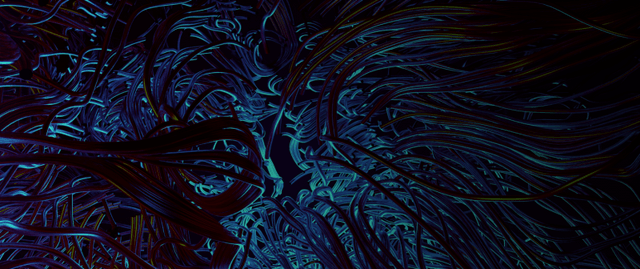What is CFD in Crypto?

In this article, you will learn what Crypto CFD trading is and how it works. In addition to that, we will understand the difference between crypto CFD and crypto futures, what are the advantages and disadvantages of trading these instruments, and consider several strategies for risk management in the process of crypto CFD trading.
The development of electronic trading technologies has given rise to numerous markets, financial instruments, and a number of strategies that are used to make a profit in both investing and trading in volatile markets. The crypto market, which is one of the most volatile of all, offers the opportunity to try your hand at profiting from price spikes using a trading style such as crypto CFD trading.
What is CFD Crypto Trading and How Does It Work?
CFD stands for Contract for Difference. It is a derivative financial instrument that involves the use of leverage and offers a market participant the opportunity to make money on the difference between the opening and closing price of a position in a particular financial instrument. CFDs are available on a variety of financial products: stocks, stock indices, bonds, currencies, commodities and interest rates, and the newest type, cryptocurrencies. One of the most obvious advantages of this tool is that investors can open both long and short positions. Thus, these products can be used both for speculation and risk hedging. Investing in CFDs also provides earnings-related advantages in the form of leverage. To open and maintain a position, users must provide collateral, i.e., margin, as in the futures market. The margin required for trading CFDs is usually lower, which is why CFD trading is so popular with retail clients.

Regarding cryptocurrency CFDs, they involve contracting for price differences on major cryptocurrencies such as BTC, ETH, DOGE, ADA, XRP, and others. The most significant cryptocurrency trading CFD example is BTC/USD CFD (Bitcoin CFD) which is rightfully considered as the most popular. The average spread on this asset is 320-450 pips, and the average daily volatility is around 4.5-4.6%, from which we can conclude that this tool has increased volatility, exceeding the volatility of the major currency pairs by 6–7 times, as well as much less liquidity than the major currency pairs. Since CFD on cryptocurrency is a relatively new instrument, only a limited number of Forex brokers provide it to its customers.

Professional traders and investors, who have already tried to work in financial markets, know CFD on traditional assets – oil, gold, and currencies. Their main advantage is that of leverage. Trading cryptocurrency CFDs, especially the DMA model, reinforce these advantages because the price movements in cryptocurrencies are more significant. And it is the price movements that generate profits in CFDs. Greater volatility provides greater earning opportunities for traders willing to take greater risks. The CFD on cryptocurrencies is closely related to the spot market. A CFD contract is executed by a broker (an intermediary for each transaction) in the spot market rather than simply tied to a price (like futures, for example). I.e., the strike price is formed by the total liquidity of the market. In the case of the future, it is different. The price of futures is formed by the supply and demand for the “expectation” prices of the asset.
Crypto CFDs are designed to meet the needs of every trader, offering enhanced opportunities to trade different contracts. At the same time, Crypto CFD trading has four main components which form its basis:
Volume of the Deal
CFDs are traded in lots or standard contracts. The volume of CFDs depends on the specific asset being traded and often mimics the way the underlying asset is traded. For example, on any crypto exchanges, Bitcoin is traded in whole or decimal parts, and its equivalent CFD on a Forex exchange, for example, also simulates the same value in whole or decimal parts. Simply put, a trader would need to buy 10 Bitcoin CFDs to open a position simulating buying exactly 10 Bitcoins, or buy 0.25 Bitcoin CFD contacts to open a position simulating buying 0.25 Bitcoins.
Expiration Time
Expiry time refers to the time period that marks the moment from when a CFD crypto contract is bought and the moment before it is sold. In most cases, CFD crypto contracts do not have a fixed expiration date. When it comes to cryptocurrency CFD trading, it is necessary to back up your open positions with a strong trading strategy and keep track of your trading plans, keeping in mind the key expiration dates of non-crypto assets CFDs because brokers do not prolong positions after the expiration date. Consequently, all open positions are automatically closed after the expiration date.
Spreads
Cryptocurrency trading with CFDs uses two different prices: the buy price (Bid) allows a trader or investor to open a CFD long trade, and the sell price (Ask) is the price at which a trader can open a CFD short trade.
When using this tool, the selling price is slightly lower and the buying price is slightly higher than the currently available market price of a particular asset. The difference in these prices is known as the spread, which in most cases covers the cost of opening a CFD on crypto. In other words, the buy/sell prices are adjusted accordingly to reflect the trading costs. The exception to this is the stock CFDs that traders work with.

Key Takeaways
- There are CFDs for gold, currencies and oil. However, the youngest and most popular option among all today is considered to be cryptocurrency CFDs.
- Cryptocurrency CFDs involve contracting for price differences on significant cryptocurrencies such as BTC, ETH, DOGE, ADA, XRP, and others; however, the most popular cryptocurrency trading CFD example is BTC/USD CFD (Bitcoin CFD).
- Most often, crypto CFDs are used on the basis that the cryptocurrency market is very volatile and allows you to make significant profits even from the slightest fluctuations in asset prices.
Advantages and Disadvantages of CFD Crypto Trading
Like any other financial instrument, be it options, futures, or regular spot trading, crypto CFDs also have their advantages and disadvantages, which we will discuss below.

Advantages of CFD Crypto Trading
Let’s start with the main advantages that traders get when they trade cryptocurrency CFDs
Have a Question About Your Brokerage Setup?
Our team is here to guide you — whether you're starting out or expanding.
Risk Hedging
Suppose a trader owns 1 Bitcoin and several Ethereum and wants to hold them for a long time. However, in the short term, he expects the quotes of these digital assets to go down. In such a scenario, CFD allows him to open a short position to compensate for his potential losses. If his calculations are correct, he will make a profit, and the CFD will also compensate for his losses. And if he is wrong, his losses will be compensated in the future, and he can close the position immediately.
Ability to Open Short Positions
Many people who want to profit from the growth of digital assets also do not miss the opportunity to earn on the fall in quotations. Crypto CFDs provide an excellent chance to test the chosen trading strategy by opening short positions. This can be an advantageous function when a trader knows that the quotations of a particular crypto asset may collapse in the near future as a result of negative news, etc., which allows for additional profits, which sometimes amount to thousands of percent for experienced traders.
Leverage
Like trading cryptocurrencies futures contracts, crypto CFD gives you the ability to use leverage to increase your potential profit while trading crypto assets. This feature allows the trader to develop an optimal trading system that provides an optimal balance between risks and increased profits that a trader might not get using the standard spot trading mode in the crypto markets. It should be remembered that crypto CFD is a high-risk instrument that requires a careful analysis of the market situation before applying it in practice.
Disadvantages of CFD Crypto Trading
Now let’s look at a number of disadvantages that are inherent in crypto CFDs.
Large Leverage
Despite the fact that crypto leveraged trading allows market players to achieve incredible results, it also carries certain risks. Increased potential profit due to increased leverage increases the probability of losing the deposit. In order to reduce this risk, retail traders can use standard principles of money management or create their own. As a rule, minimizing the level of leverage allows reducing potential losses, as the lower the leverage, the lower the level of funds borrowed from the broker and the lower the probability of a deal’s liquidation.
High Volatility
The high volatility of the crypto market has always caused anxiety among some traders and opened up new opportunities for others. Nevertheless, one cannot deny the fact that the volatility of digital instruments is a dangerous phenomenon that must be taken into account by all traders without exception, especially beginners who have just begun to get acquainted with the crypto world. Moreover, in order to avoid unforeseen situations associated with the use of borrowed funds of a broker, the most important thing is to stick to the chosen strategy and adjust as necessary.
Speculative Properties of Contracts
The nature of both futures contracts and crypto CFDs suggests a speculative nature, as traders do not own the assets being traded. It is also necessary to remember that all CFD contracts are unstable financial products, due to their speculative nature. Sometimes the quotes of one or another crypto asset can change rapidly in a fairly short period of time, which can negatively affect trading with leverage, which, as a result, scares off novice traders.
Crypto CFD and Crypto Futures: What is the Difference?
Crypto derivatives, including options, futures and CFDs, have become one of the most popular leveraged trading methods today. The main consumer of cryptocurrency derivatives is a speculative trader. They are also used by aggressive investors to increase profitability. Cryptocurrency futures and crypto CFDs stand out from the masses of other derivatives, which is the reason why they are very often equated to the same type of action, however, there are many significant differences among them.

The broker guarantees the quality of orders executed in CFD, while in case of crypto futures all the guarantees are made by the crypto exchange, where the trading takes place. The broker defines the price for the CFD, while the crypto futures prices are defined by the crypto exchange. When working with the CFD contracts, the broker does not charge any commission: the trade is carried out only on the spread. On futures, there is both a spread and a broker’s commission. And it would be logical to assume that in this case, CFD trading is cheaper. However, such a move is offset by the fact that spreads on CFDs are usually much higher than on exchange-traded crypto futures.
With CFDs, the swap is charged daily, while operations with cryptocurrency futures implies a daily rollover for the duration of one contract. While working with CFD contracts, there is a probability of the conflict of interests between broker and client. For instance, if the broker does not enter the interbank market, the client’s losses may increase the broker’s profit. With futures, the situation is different: these contracts are put on the exchange market by default. If any disputes arise between the participants of the futures trading, the world-famous regulators such as the CFTC, the FSA and the NFA will be the judges.
When working with crypto CFDs, the regulator will be the broker himself: it is his right to cancel the problematic transaction completely and not to pay out money. When working with futures brokers, the client’s funds are deposited into a bank account, while when trading CFDs, the client’s funds are deposited into the broker’s account. Thus, if the broker goes bankrupt, the client can lose all his money, unlike a similar force majeure for futures brokers.
In practice, the most important difference is that when working with crypto futures, the trader becomes the owner of the asset, while trading CFD, he earns only on price changes in this asset, not owning the asset itself.
Many traders choose to trade crypto CFDs because of the increased leverage, which is many times greater than that used in futures trading and other derivatives.
Risk-Management Strategies When Trading Crypto CFDs
As previously stated, crypto CFDs involve a high level of risk, which must be controlled through the use of different tools and tactics that can ultimately prevent unfavorable developments as a result of a nervously chosen trading strategy.
Discover the Tools That Power 500+ Brokerages
Explore our complete ecosystem — from liquidity to CRM to trading infrastructure.
Hedging
Hedging is a risk management technique used to reduce losses. It is used to protect your profits, especially in times of uncertainty. In the abstract, the idea is that if one of your investments makes a loss, then you have an alternative hedged position to compensate for the loss.
With leverage, a trader can short the necessary crypto asset of the relevant market to hedge against losses in the event of an uptrend. Accordingly, when the market falls, whatever he loses in the main portfolio will be compensated by his hedging. Conversely, if the market continues to rise, the trader will lose on the hedged position on the crypto asset, but will earn on other assets he holds.
Stop Loss and Take Profit
Stop Loss and Take Profit are types of protective orders, which are set to automatically close the transaction. Stop Loss limits the trader’s possible losses, Take Profit helps to fix the profit when it reaches the desired level. These limit orders have always been a reliable method of protection against unwanted losses during trading, which is especially important when dealing with such risky and complex trading instruments as options, forwards and CFDs.
Leverage Size
The amount of leverage plays an important role in balancing expected profits and the level of risk. To reduce the potential risk of losing initial capital, even professional traders are advised to use minimal leverage, let alone beginners. Properly adjusted leverage can avoid large losses, which is especially important to keep in mind in highly liquid markets like crypto.
Conclusion
Cryptocurrency CFDs are a great tool to expand knowledge in the crypto sphere, offering new opportunities for earning on cryptocurrencies. However, despite the high income, you need to remember that this tool is one of the riskiest: a wrong strategy can cost you a lot of money. Therefore, before you start working with this trading instrument, it is necessary to thoroughly study all the features of its operation in order to choose the optimal trading style.
FAQ
What is CFD crypto trading and how does it work?
CFD crypto trading allows you to speculate on cryptocurrency price movements without owning the asset. Traders profit from price differences by opening long or short positions.
What are the advantages of trading CFD crypto?
CFD crypto offers leverage, risk hedging, and the ability to trade both rising and falling markets, providing flexibility and opportunities in volatile crypto markets.
How is CFD crypto different from crypto futures?
CFD crypto focuses on price speculation without ownership, while futures involve contracts traded on exchanges. CFDs often have wider spreads but no commissions.









